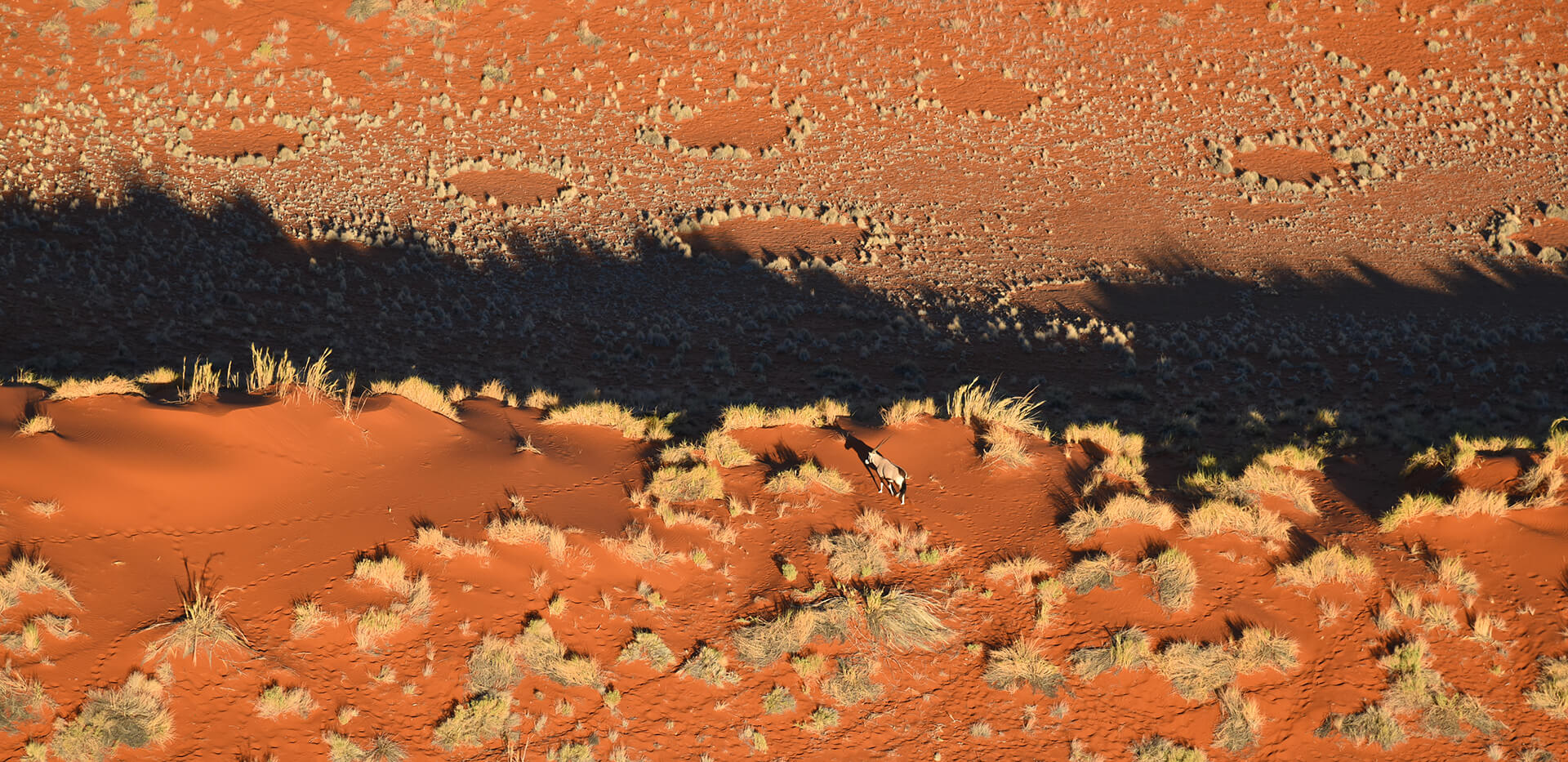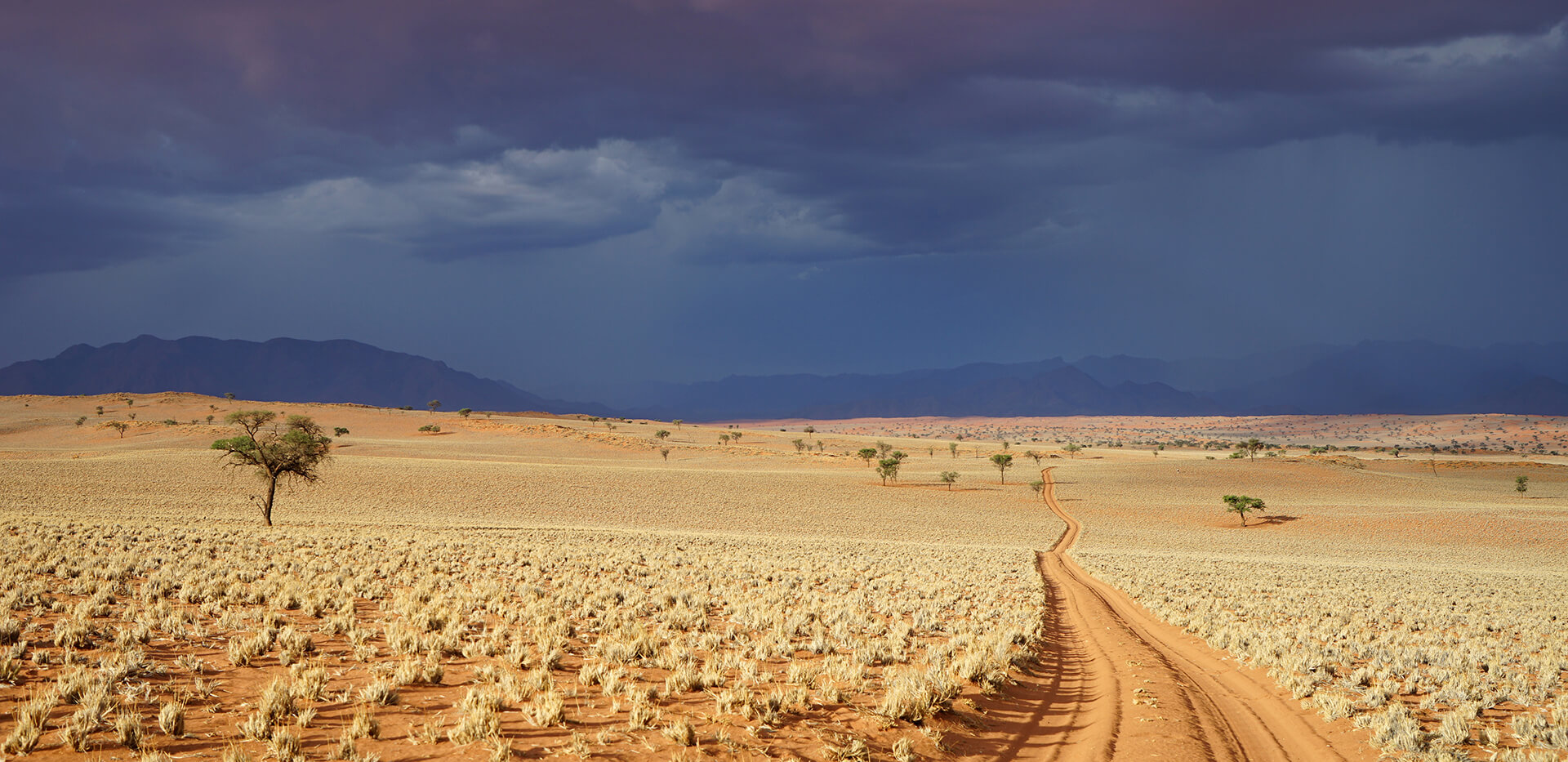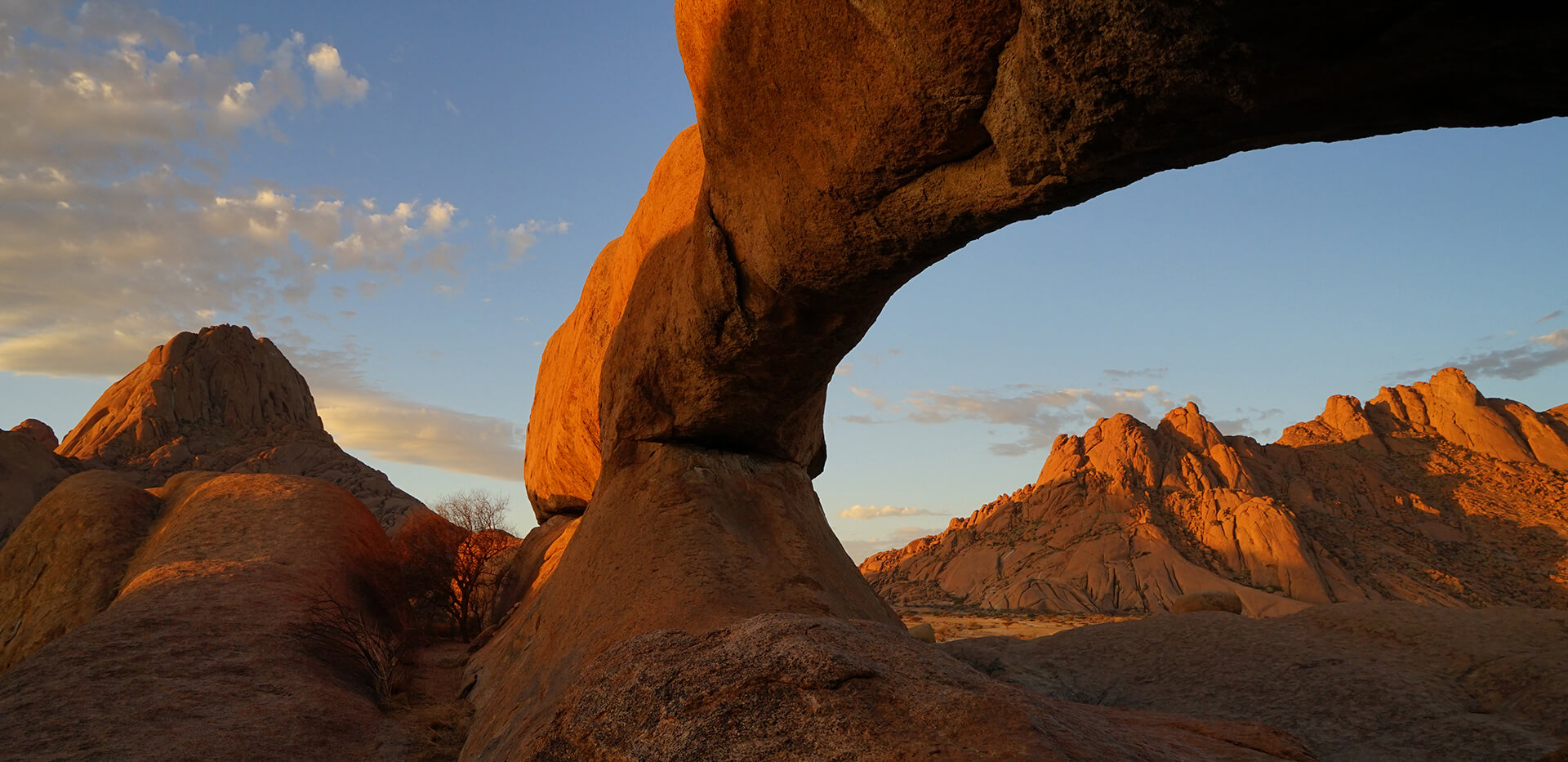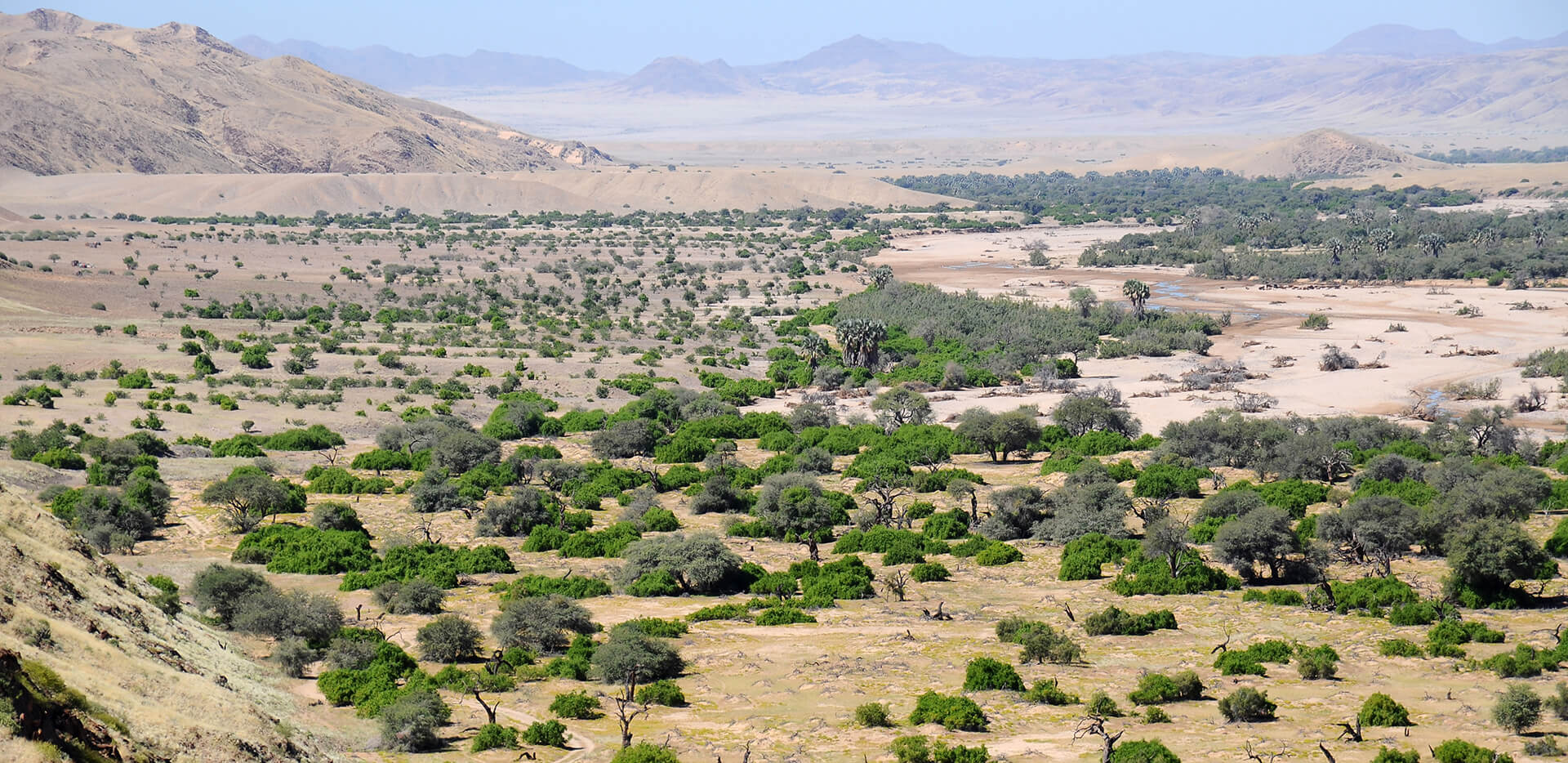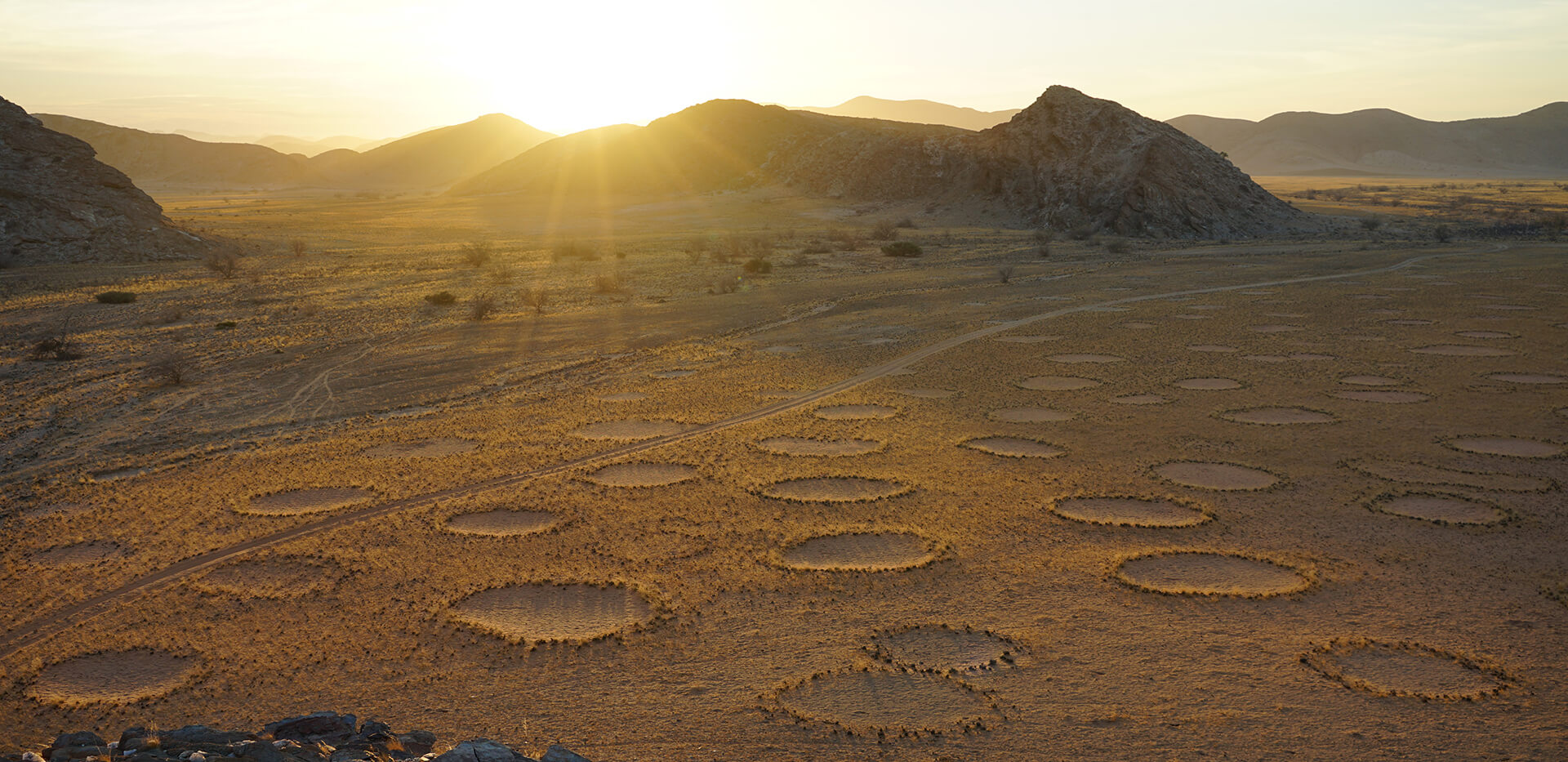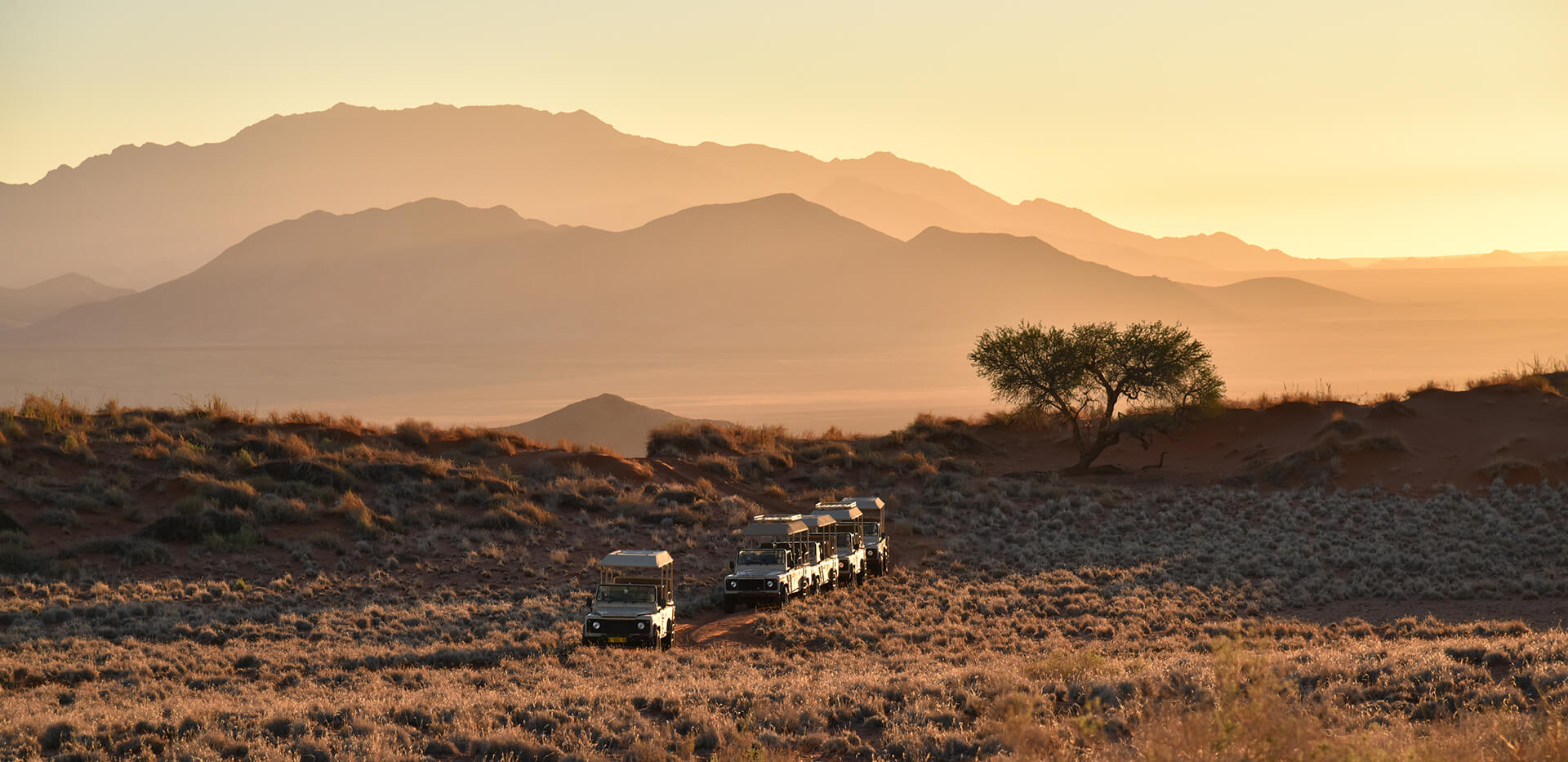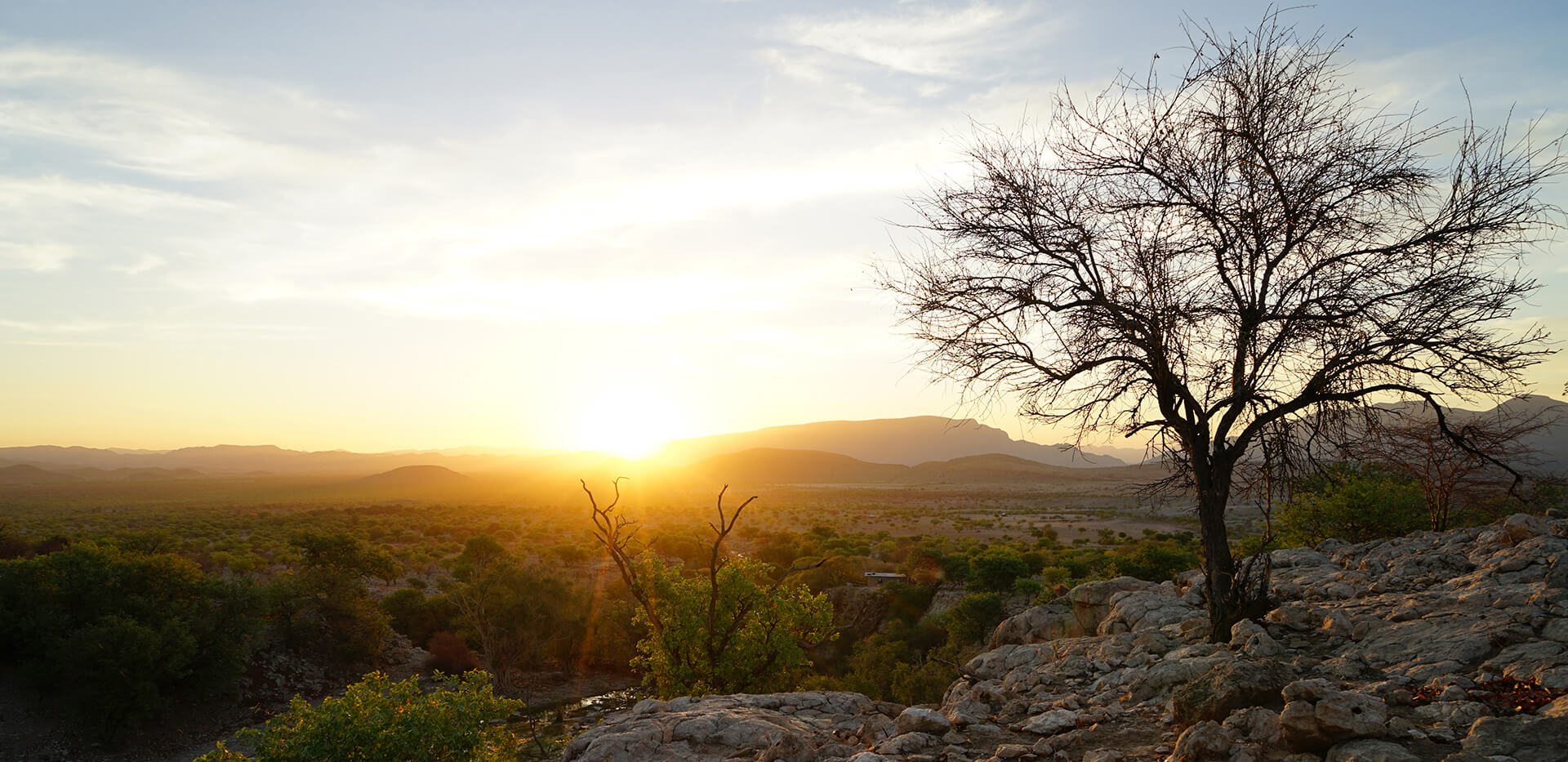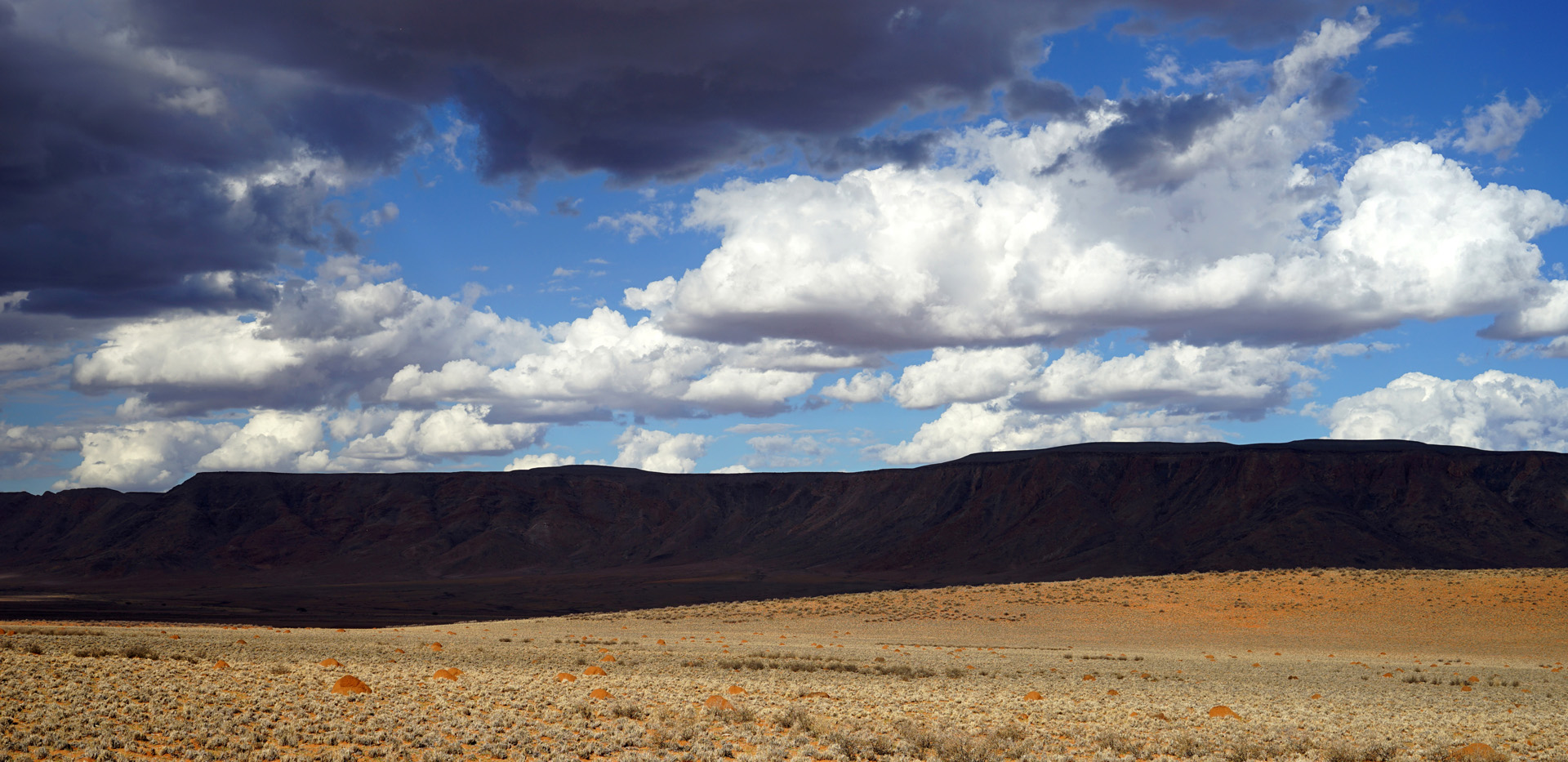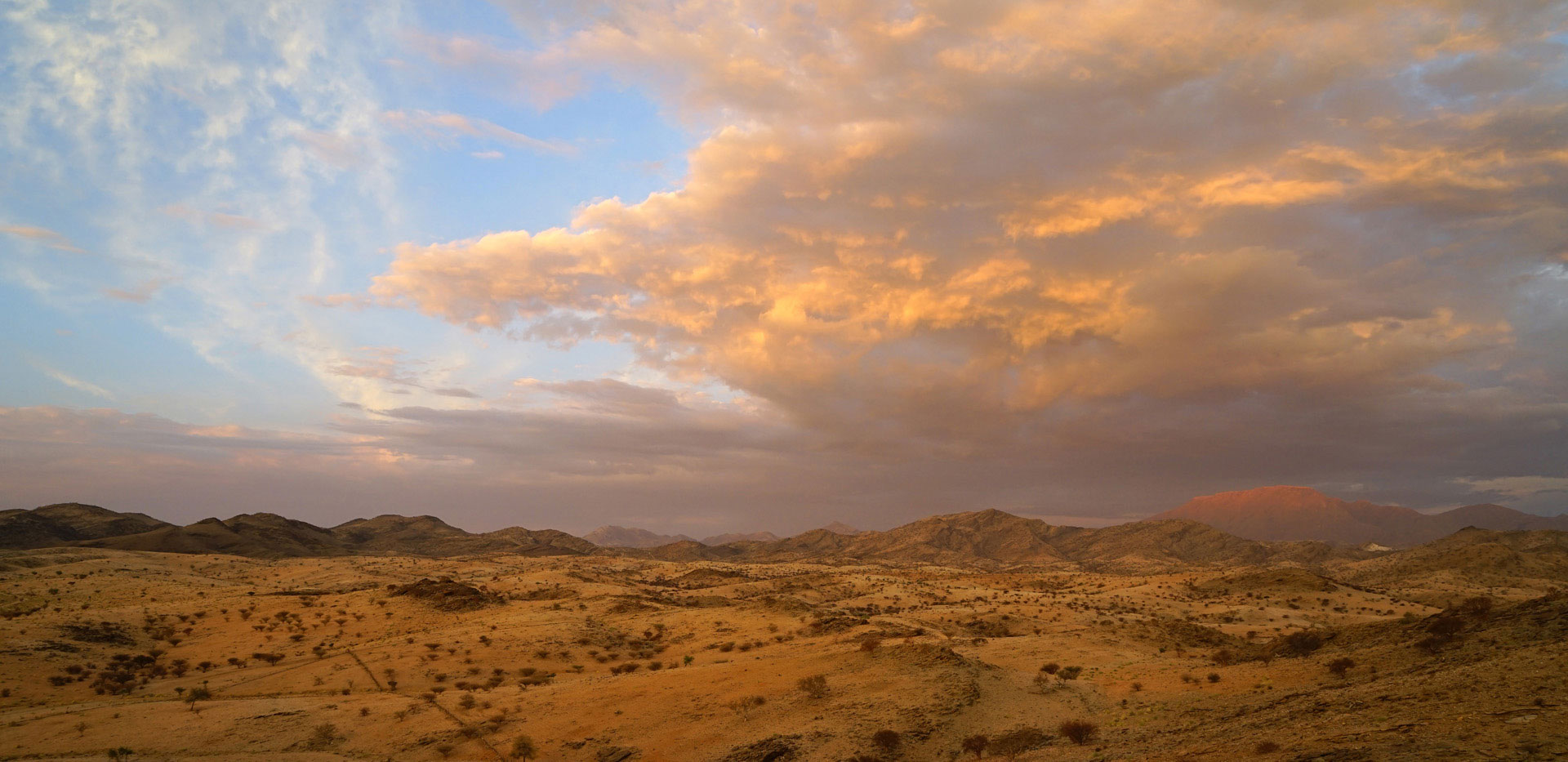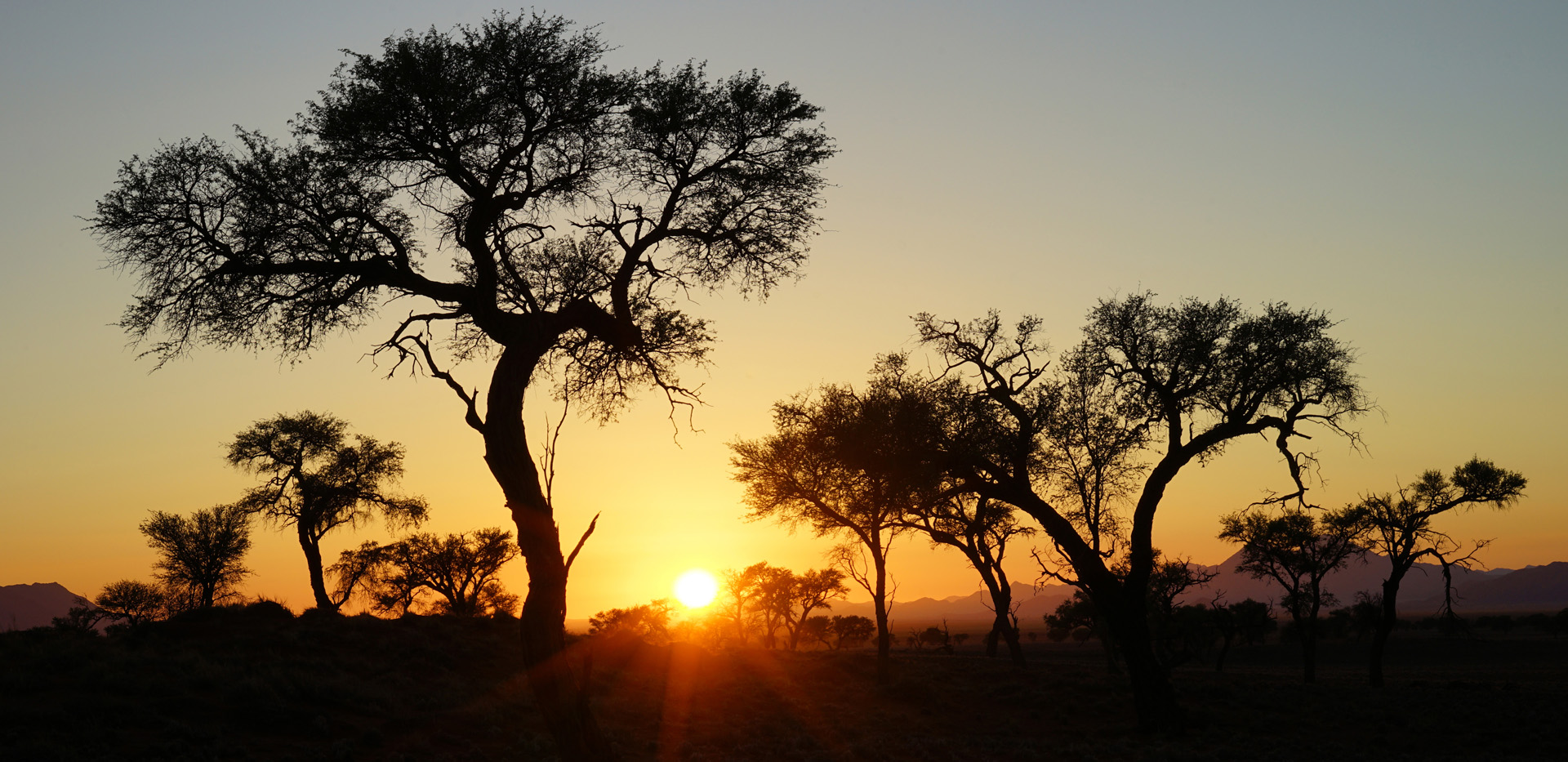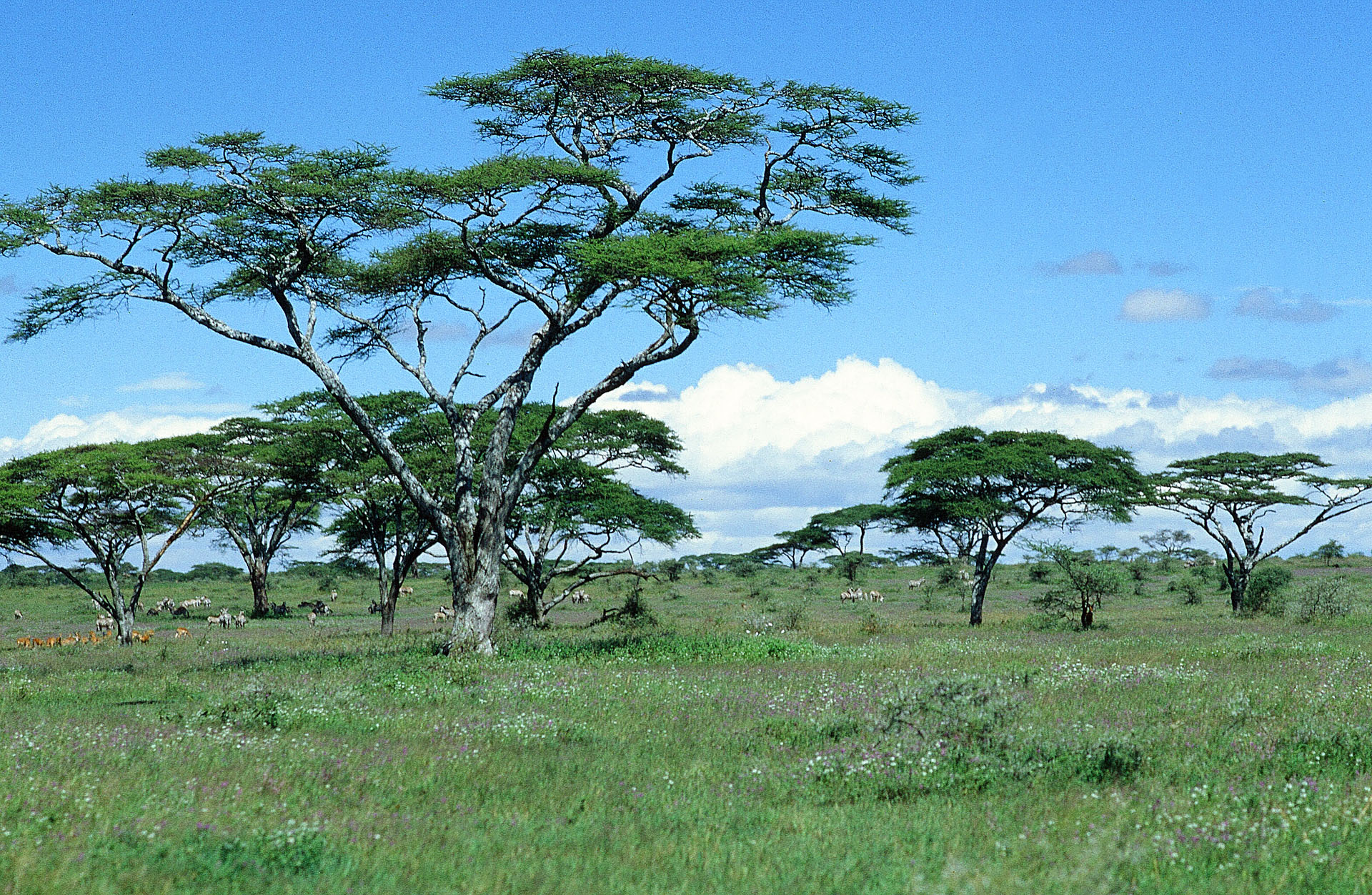Did you know...
…that there are no acacias in Africa?
It is perhaps known that in Namibia the spiny Hoodia gordonii or the cactus-like Euphorbia virosa are not cacti as such, but saying that there are no acacias in Africa – that sounds more like a bad joke, doesn’t it? Is there any more typical idea of Africa than an open acacia savanna in the sunset?
Thorny tree species such as the umbrella thorn acacia (Acacia tortilis) in East Africa or the camel thorn tree (Acacia erioloba) in Namibia have been the regional epitome of the African landscape for almost 200 years. With the Acacia nilotica (Egyptian acacia), the genus Acacia was first described by Philip Miller in 1754 for a species that is very widespread in Africa. In taxonomy, such initial descriptions of a so-called “type species” are regarded as the basis for naming the genus, which is why all acacia species found in Africa after 1754 were included in the genus of Acacias.
Well, you have probably guessed it already, with the turn of the millennium new techniques such as DNA analysis have shown that the globally spread genus of Acacia should be correctly differentiated into at least five different genera. The new molecular-based techniques compare very precisely, base by base, the genetic DNA sequence and thus they can prove or disprove much more precisely evolutionary relationships than purely morphological comparisons. Thus it came in 2005 that the Australians demanded for their approximately 960 largely thornless acacia species that they are allowed to bear the genus name Acacia, whereas the approximately 150 African acacia species with their typical thorns are to be renamed into the two main genera Vachellia and Senegalia. In 2011, this application was accepted at the 18th International Botanical Congress in Melbourne. Thus, for the first time in systematic history, the type species was changed – to an acacia species (Acacia penninervis) that only occurs in Australia. There are quite a few people, scientists and non-scientists alike, who see this unique process as a mainly politically motivated renaming, because that is not how taxonomy should actually work. The Australians, on the other hand, argue that it would have been far more complicated to rename around 960 Australian acacia species and it would also cause a lot of confusion for the commercial distribution of Australian acacia products.
In any case, the decision has been made since 2011. East Africa’s iconic umbrella thorn acacia is no longer called Acacia tortilis but Vachellia tortilis and the camel thorn tree, which is so typical for Namibia, is after 175 years no longer called Acacia erioloba but Vachellia erioloba. Still, there is good news. All worldwide acacia species, whether Australian Acacia or the “new” African Vachellia, belong to the superordinate tribe of the Acacieae and therefore it is not fully wrong to speak of acacias (Acacia sensu lato) in general sense. There is a similar linguistic case in the Australian outback. This is largely dominated by the well-known Spinifex grasses. However, the actual genus name of these grasses is Triodia and the Spinifex genus itself is mainly found only in Australian coastal areas.
Welcome to NAMIBIA-ECO-TOURS. Due to my studies in Namibia and interest in dryland ecology, I have known this exceptionally beautiful country for more than 20 years now. I invite you to an exclusive tour through Namibia.
